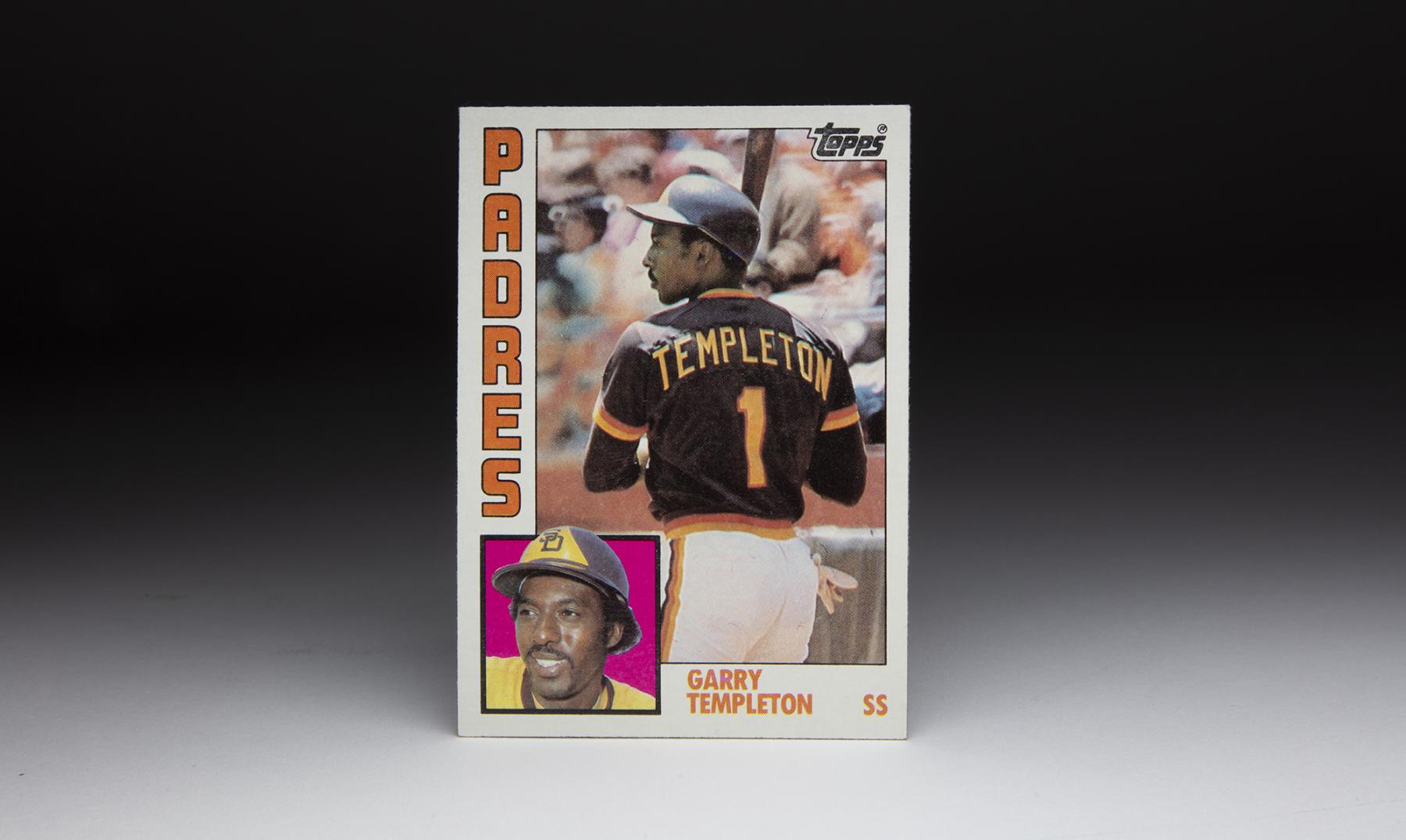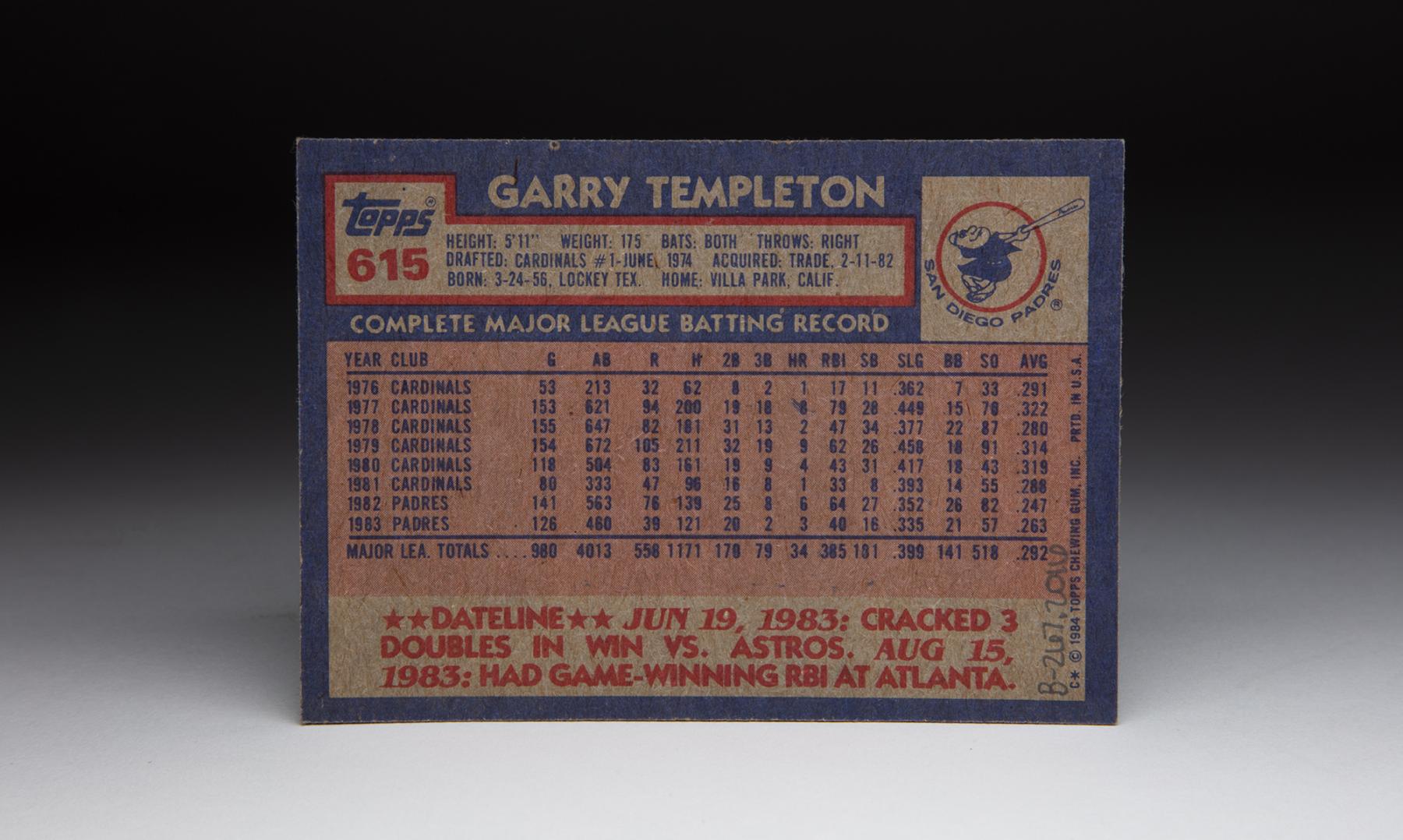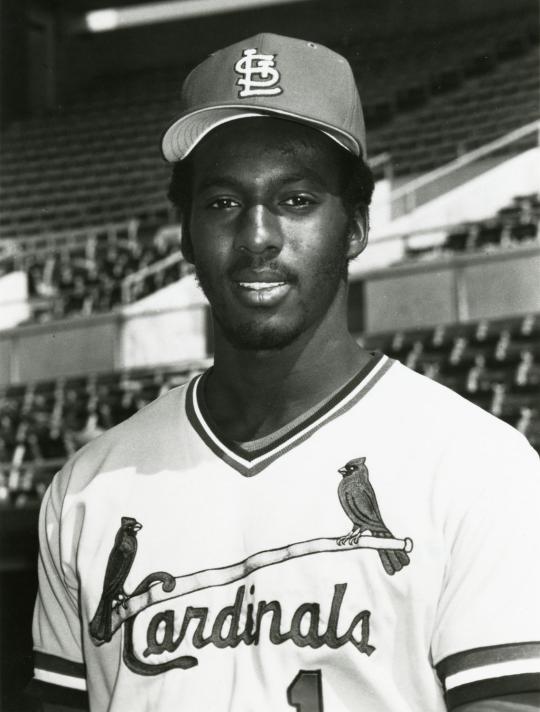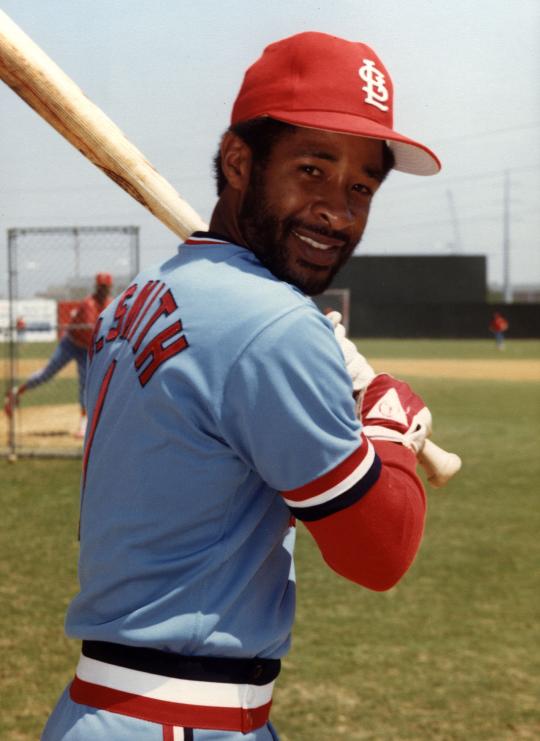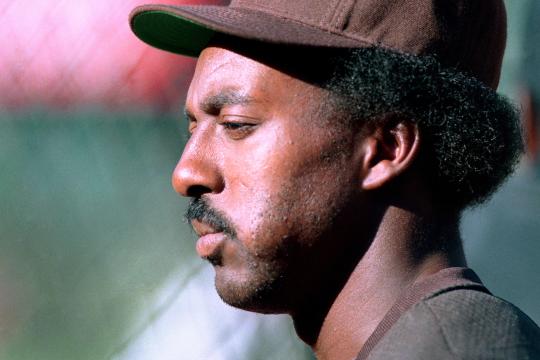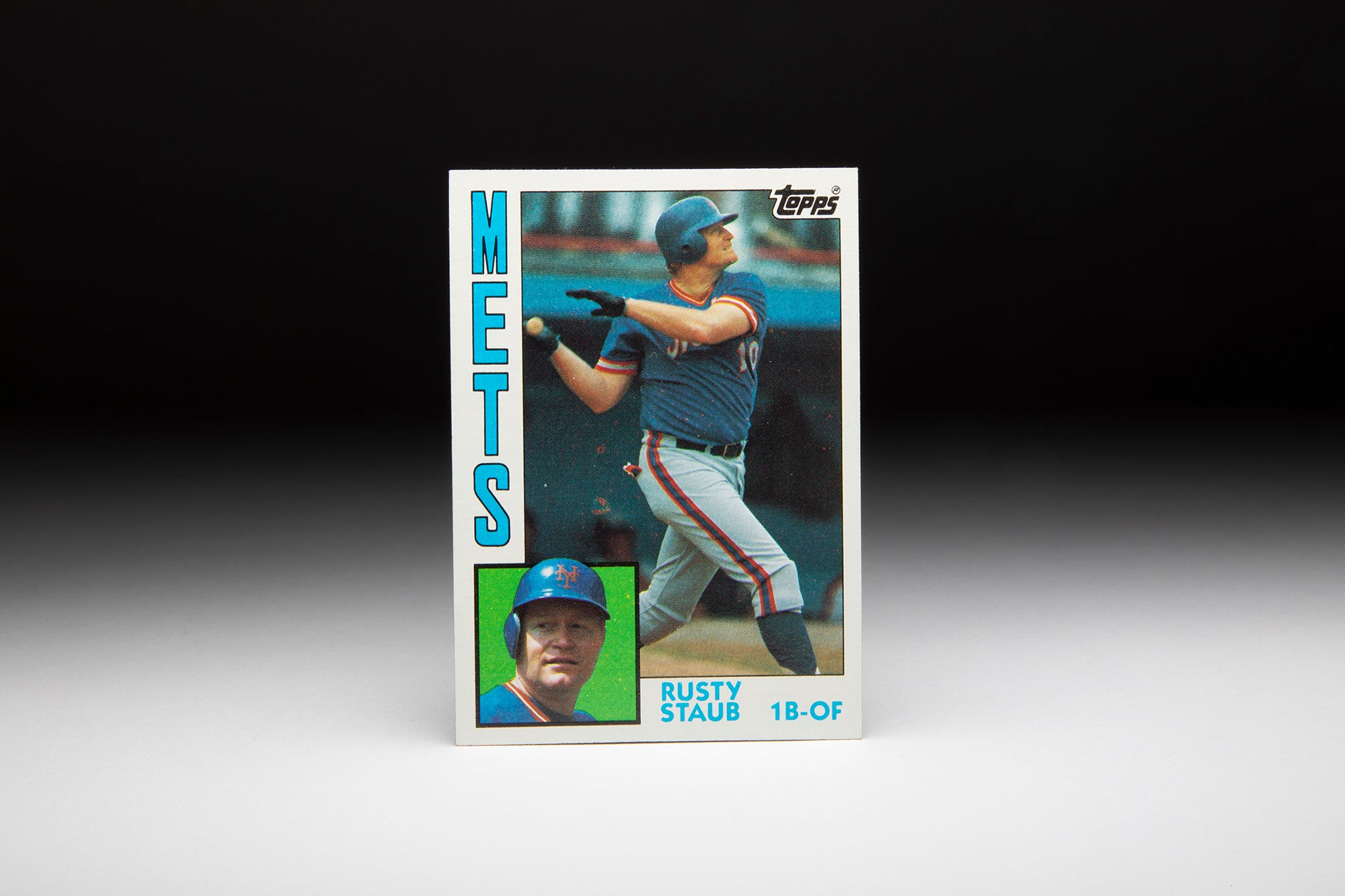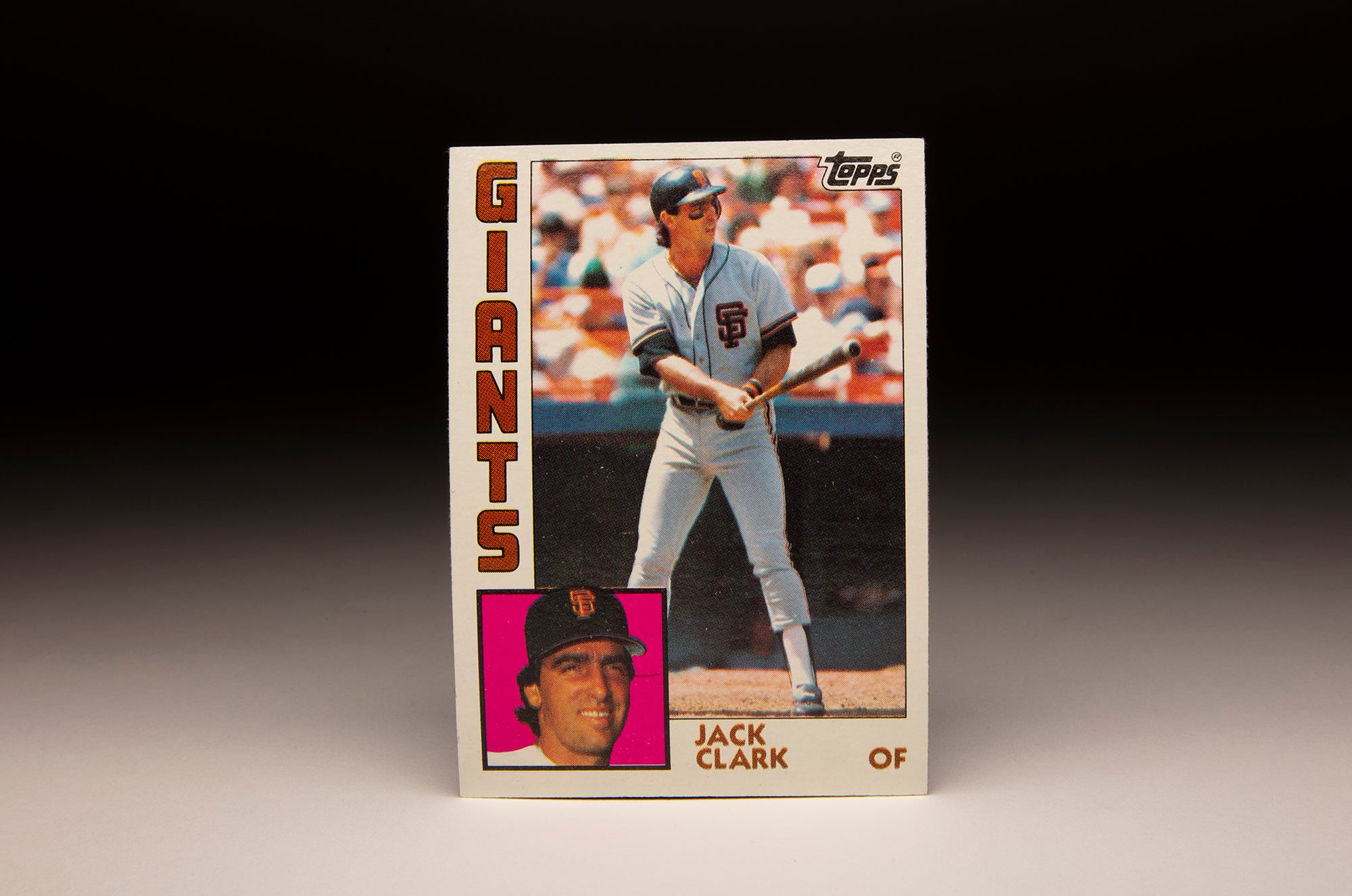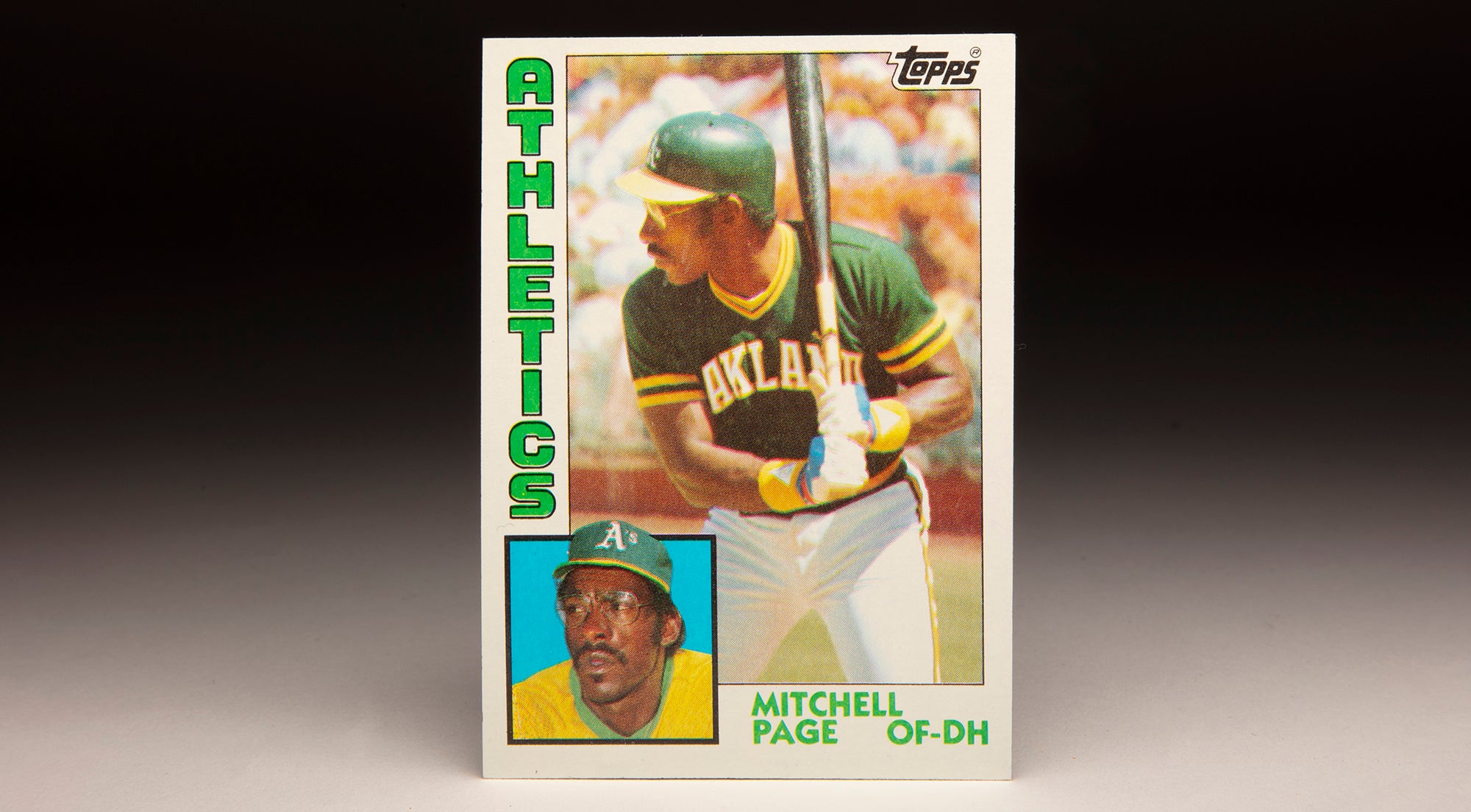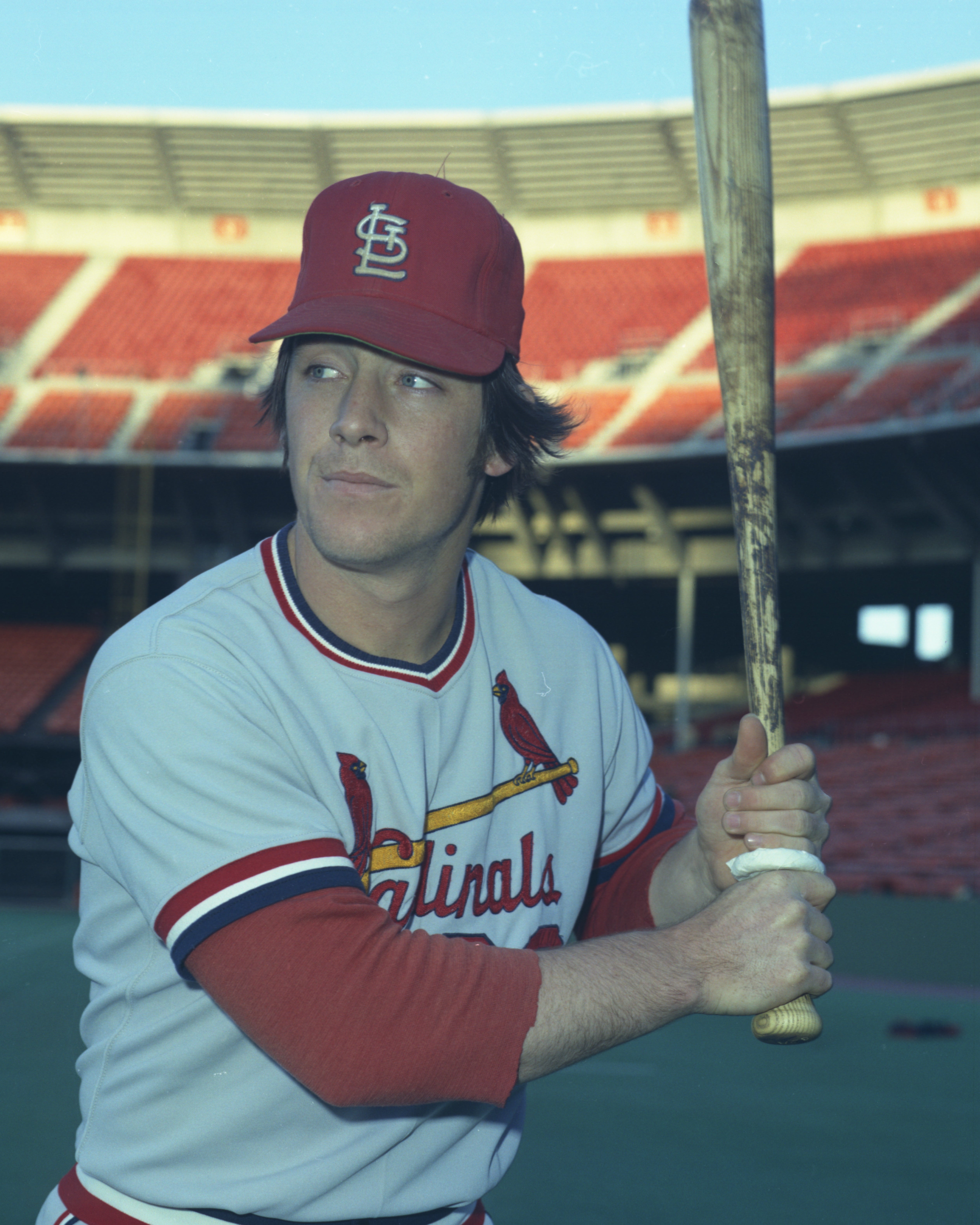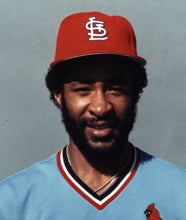- Home
- Our Stories
- #CardCorner: 1984 Topps Garry Templeton
#CardCorner: 1984 Topps Garry Templeton
Since the birth of the National League in 1876, only one player has led the league in triples in three straight seasons.
When Garry Templeton made history with his three-base hits from 1977-79, he was arguably the best offensive shortstop in the game. And though his career path changed dramatically when he was traded for future Hall of Famer Ozzie Smith, Templeton would fashion a decades-long big league journey that included a historic run in San Diego.
Born March 24, 1956, in Lockney, Texas, Templeton and his family moved to Southern California when Garry was seven. His father, Spiavia, had been a bench player in the Negro Leagues in the 1940s.
Spiavia Templeton encouraged his sons to play baseball but would not let them pitch, fearing arm injuries. But Garry matured into a premium amateur athlete with world-class speed and a strong arm that earned him a spot on the varsity baseball team at Santa Ana Valley High School as a freshman.
“Garry insists he struck out only once in four seasons,” Hirsch Musick, Templeton’s high school baseball coach, told the Chicago Sun-Times. “I have him down for twice.”
Hall of Fame Membership
There is no simpler, and more essential, way to demonstrate your support than to sign on as a Museum Member.
Templeton was also a star defensive back on the school’s football team and considered offers to matriculate at Southern California and Arizona State. But when the St. Louis Cardinals selected him with the 13th overall pick in the 1974 MLB Draft, Templeton turned pro.
“When the Cardinals signed me,” Templeton told the Sun-Times, “they said I’d be in the big leagues in a couple of years. They said they had no shortstops in the system with the talent I have. I took it from there.”
After batting .235 in 41 games with Gulf Coast League and Florida State League teams as an 18-year-old in 1974, Templeton became a top prospect in 1975 when he hit .401 in 42 games with Double-A Arkansas. The Cardinals wasted no time in turning the naturally right-handed Templeton into a switch-hitter, and Templeton had few issues adapting to the left side of the plate.
The Cardinals brought in veteran Don Kessinger to play shortstop in 1976, but many felt Templeton was ready for the big leagues coming out of Spring Training. But with the new Basic Agreement still unsigned – leaving the possibility that Templeton could become a free agent after just one season – the Cardinals kept Templeton in the minors until the players and owners agreed on a six-year free agency structure.
After hitting .321 in 106 games for Triple-A Tulsa, Templeton made his big league debut on Aug. 9, 1976. He hit .291 with 32 runs scored and 11 steals in 53 games in the season’s final two months.
“When I saw this kid in Spring Training, I knew I wasn’t going to be playing shortstop all year,” Kessinger told The Tennessean in Nashville. “I knew it was just a matter of time.
“All Garry needs is experience. The rest will take care of itself.”
Templeton proved his supporters right in 1977, hitting .322 with 200 hits, 94 runs scored, 28 steals and a big league-best 18 triples in his first full year in the majors. He followed that with a .280 average, 82 runs scored, 31 doubles and 34 steals in 1978.
Then in 1979, Templeton got red hot at the summer progressed, hitting .377 in June to push his average near .330. He remained consistent throughout July and August, and entered the final week of the season needing six hits from the right side to become the first player in history with 100 hits from both sides of the plate in a single season. Templeton batted right-handed against right-handed pitchers down the stretch and went 6-for-15 (.400) in those at-bats with a double, triple and a home run, finishing the season with 111 hits from the left side and 100 from the right.
“That was one of the most amazing things I’ve ever seen,” Cardinals teammate Ted Simmons, who was also a switch-hitter, told the St. Louis Post-Dispatch. “And (the hits) weren’t dinks; he hit the ball hard. I’ve never seen anyone in the game do that.”
Whitey Herzog, who arrived on the scene as Cardinals manager during the 1980 season, called Templeton “the most talented” player he ever saw.
“He had great running speed, a great arm, he was a switch-hitter,” Herzog told the Post-Dispatch. “He had everything but power, that was the only thing that he didn’t have that (Mickey) Mantle had.”
But the 1979 season also saw Templeton draw the national spotlight when he demanded a new contract in Spring Training and due to his decision not to participate in the All-Star Game. Selected as a reserve, Templeton was quoted widely as saying: “If I ain’t startin’, I ain’t departin’.”
The remark, which may have come from another source and been repeated by Templeton, reinforced a school of thought that said Templeton was too laid back. His easy-going demeanor often drew criticism from fans and media who were anxious to see players get their uniforms dirty.
“If I look nonchalant,” Templeton told the Sun-Times, “it’s because I’m trying to be. I’ve been doing it all my life. Unless someone shows me something that will benefit my style of play, there’s no reason for me to change and do it their way.”
But eventually, controversy caught up with Templeton.
He signed a six-year, $4 million contract prior to the 1980 season but missed 17 games in late July/early August with a broken left thumb suffered sliding headfirst into first base while trying to beat out an infield hit. He finished the season with a .319 batting average in 118 games and won his first Silver Slugger Award – but also led all NL shortstops in errors for the third straight year.
Herzog, meanwhile, was already planning an overhaul of the team.
Then on Aug. 26, 1981, Templeton failed to run to first base following a dropped third strike in a game against the Giants at Busch Stadium. Booed by the fans, Templeton responded with a well-known gesture and later with another – and was finally physically pulled from the field by Herzog.
He was fined $5,000 and suspended for three weeks. But over the Cardinals’ final 21 games of the season – as they were battling the Expos for the second-half title – Templeton hit .369 with 13 runs scored and 10 RBI.
The Cardinals finished with the best overall record in the NL East at 59-43 but were one-and-a-half games behind the Phillies in the first half and half a game behind the Expos in the second half – missing the playoffs entirely.
Following the 1981 season, it was clear that Templeton would not play for the Cardinals again. Herzog publicly indicated as much leading up to a deal that sent Templeton to the Padres for Ozzie Smith. Four other players were involved in the trade, and the transaction took several weeks to consummate due to ongoing negotiations with Smith, who had a no-trade clause in his contract.
But Templeton was headed back to Southern California.
“He’s working hard,” said Padres coach Jack Krol – a former Cardinals coach – in the spring of 1982. “He’s working harder than I’ve ever seen him work.”
At 26, Templeton appeared to be entering his prime. His manager in San Diego, Dick Williams, was known as a no-nonsense skipper – but Williams had only praise for Templeton despite the fact that the shortstop would never again reach the gaudy offensive figures he achieved in St. Louis.
Templeton injured his left knee early in the 1982 season and it limited him to 141 games and a .247 average that year.
“Tempy is fighting it,” Williams told the Los Angeles Times. “The knee is hampering him. You can tell, especially when he bats from the left side.”
Templeton had knee surgery prior to the 1983 season and appeared in just 126 games with a .263 batting average. But Williams and the Padres were assembling a team that would bring San Diego its first-ever postseason appearance. And Templeton was one of the clubhouse leaders.
In 1984, the Padres bolted to a 15-8 start in April, with Templeton hitting .338 in that span. He played in each of the team’s first 86 games and helped the Padres build a comfortable division lead that resulted in a 92-70 record, 12 games better than second place Houston and Atlanta in the NL West.
Templeton finished the season with a .258 batting average and his second Silver Slugger Award.
Facing a red-hot Cubs team in the NLCS, the Padres lost the first two games at Wrigley Field.
But following Game 2, the team was greeted by an enthusiastic crowd at Jack Murphy Stadium when they returned to San Diego. Templeton began waving a towel to encourage the cheering fans – and suddenly, the Padres were energized.
The next night prior to Game 3, Templeton waved his hat in the air during the pregame introductions, firing up the 58,346 fans on hand to see the Padres first-ever playoff game. His fifth-inning two-run double off Dennis Eckersley turned a 1-0 Chicago lead into a 2-1 Padres advantage in a game San Diego would win 7-1.
“We have the momentum,” Templeton told Gannett News Service following Game 3. “The pressure is on (the Cubs) to win one, and we’re tough at home.”
Templeton proved correct as San Diego won Game 4 and 5 to advance to the World Series. He hit .316 in the Fall Classic following his .333 effort in the NLCS – and though San Diego lost to the Tigers in five games, Templeton had found his baseball home. He quickly signed a new four-year, $4.45 million deal that would carry him through the 1988 season.
Templeton hit .282 in 1985 with 55 RBI, leading the NL in intentional walks for the second straight year while regularly batting in the No. 8 spot of the Padres’ order. He earned his third All-Star Game selection – finishing second among NL shortstops with a .968 fielding percentage – as the Padres led the NL West for two-and-a-half months during the middle of the season before fading to a third-place finish.
Williams was replaced as manager on the eve of Spring Training in 1986, effectively ending San Diego’s run at the top of the division.
Templeton, however, continued to be a steadying influence despite knee problems that limited his effectiveness at the plate.
Templeton hit .247 in 147 games in 1986 and was named team captain by Padres manager Larry Bowa prior to the 1987 campaign, where he hit .222 in 148 games.
“I see a lot of pride in his new role,” Padres general manager Jack McKeon told the Los Angeles Times regarding Templeton’s captaincy. “After seeing what has transpired, maybe he should have been made captain earlier.”
But Templeton’s ongoing knee issues never allowed him to regain his status as an elite player. He was limited to 110 games in 1988, but the Padres brought him back in 1989 – and he hit .255 in 142 contests. He remained the team’s everyday shortstop in 1990, hitting .248 with 59 RBI in 144 games during his age-34 season.
But following the 1990 campaign, the Padres shook up the baseball landscape by trading Roberto Alomar and Joe Carter to the Blue Jays in exchange for Fred McGriff and shortstop Tony Fernández. Templeton was relegated to a backup role in 1991, and he appeared in just 32 games before he was dealt to the Mets in exchange for Tim Teufel on May 31.
“I wished him the best of luck,” Tony Gwynn told the Los Angeles Times after the trade. “He told me when we play the Mets, don’t hit the ball in the hole because he’s going to throw me out. I know he’s right.”
Templeton appeared in 80 games with the Mets off the bench, hitting .228. When the Mets declined to offer him a contract following the season, Templeton opted to retire.
“The only time it really bothers you,” Templeton told the Los Angeles Times about retirement, “is when you have a lot of time to yourself and you watch the ballgames on TV.”
In 1994, Templeton returned to the game with the Padres as a roving minor league instructor. Then in 1998, Templeton took over as the manager of the Cedar Rapids Kernels of the Midwest League – the Angels’ Class A affiliate.
“I love to teach,” Templeton told the Gazette in Cedar Rapids, Iowa. “A lot of kids I worked with while I was with the Padres are close to achieving their goal of playing in the major leagues. It’s a great feeling to know I helped them get there.”
He moved up to the Double-A Erie SeaWolves of the Eastern League in 1999 and then to Triple-A Edmonton in 2000. When the Angels’ highest minor league team switched locations after that season, Templeton managed the Salt Lake City Stingers in 2001, helping develop many of the players who would lead the Angels to the 2002 World Series title.
But when front office changes occurred following the 2001 season, Templeton was not re-hired.
“Somebody gets a job, they get their buddies in there,” Templeton told The Times in Munster, Ind. “There’s nothing you can say.”
Templeton managed the Gary SouthShore RailCats of the independent Northern League in 2003-04 before moving on to the Chico Outlaws of the independent Golden Baseball League and the Newark Bears of the Cam-Am League, where he managed in 2013.
Templeton finished his playing career with a .271 batting average, 2.096 hits and 242 stolen bases. In nine full seasons as the Padres’ shortstop (1982-90), Templeton – who struggled in the field at the start of his career – compiled a .965 fielding percentage.
In those nine seasons, Templeton played only two games at any position other than shortstop.
“I think if you look back on it, you could say: ‘Well, he could have done things differently,” Templeton told the Post-Dispatch in 2016. “But people don’t realize I was young. It was a transitional period for me.
“Once I came to San Diego, I matured a little. But I’m not blaming anybody, because everything that happened was on me.”
Craig Muder is the director of communications for the National Baseball Hall of Fame and Museum

